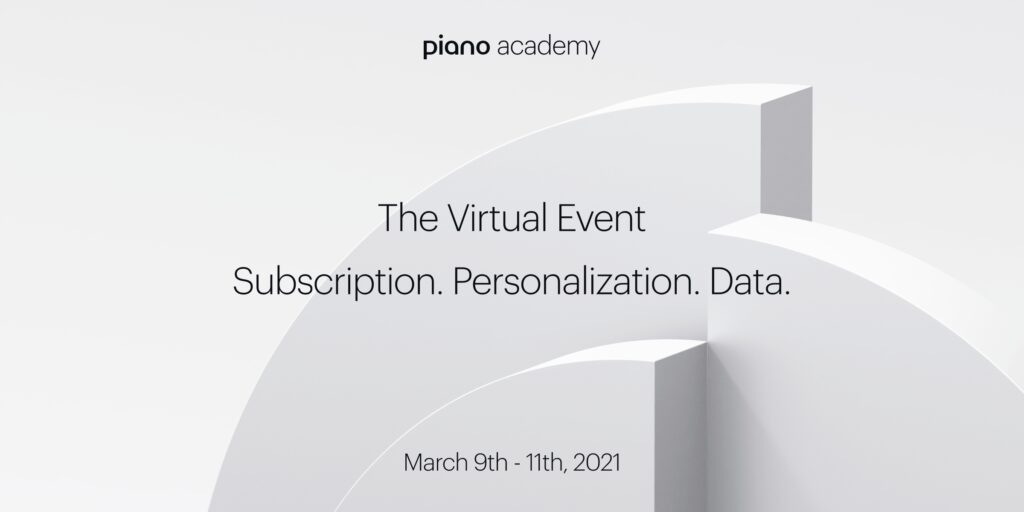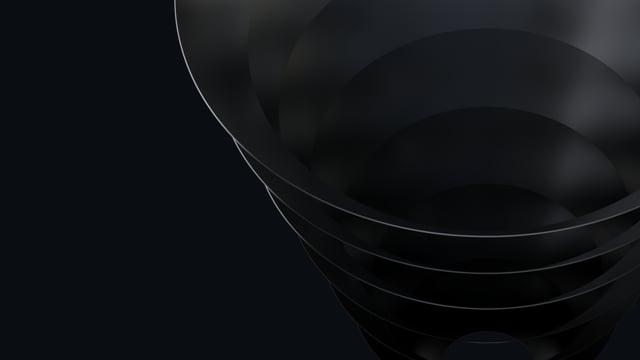Highlights from Piano Academy, Winter 2021 Edition
Our 2021 Piano Academy event series kicked off with 12 hours of content and over a dozen speakers — clients, partners and Piano subject-matter experts — who presented on subscriptions, personalization and data to hundreds of attendees across the globe. Thank you to everyone who participated in and attended the event. We are highlighting some of the best moments from Piano Academy below, and look forward to sharing additional content related to the event in the weeks to come.
Subscriptions had a boom year in 2020 — now it’s about optimizing based on learnings
Our SVP of Strategy Michael Silberman shared that Piano saw a median increase in active subscribers of nearly 58% from the end of 2019 to the end of 2020. Much of that growth was driven by increased demand for news during the COVID-19 pandemic.
Verónica Milo, Director of Product, El Español, says her publication saw a lot of annual renewals last spring. "It was not that we had this boom in March and April...we kept growing month by month all of 2020."
Svein-Erik Hole, Head Of Digital Media, Teknisk Ukeblad Media, said this publication has seen almost no churn in the companies to which they sell directly — it's the part of the business that grew especially last year. Marc Isler, Chief Revenue Officer, Tamedia, says the users who came for COVID are most interested in content in other dimensions.
"We created a streaming newsletter of what to watch on Netflix, new content formats...We are testing quite agilely," he said.
For Forbes, which launched their subscription business with Piano in late 2020, "In month one, it was almost a little bit of the true believers in the community stepping up and reaffirming their loyalty to the brand,” said Nina La France, SVP, Consumer Marketing and Business Development, Forbes Media. The Piano Strategic Services Optimization team is now helping them benchmark around medians.
“We are four months in and figuring out where we need to be when it comes to conversion and retention,” La France said, adding that ultimately Forbes’ target metrics will be revenue generated and number of subscriptions.
Launching a subscription business was a strategic decision for both Philadelphia and Boston Magazines, and the publications wanted to ensure they knew how to benchmark their performance against others.
"We wanted to pick a metric and stick with it...not every page is metered," said Paul Lopreiato, Associate Director of Audience Products and Analytics for both publications. They ultimately decided to track users who returned five or more times to the sites.
CNBC’s SVP, Executive Editor Digital, Jay Yarow said his publication has launched a premium subscription product targeted at investors, but has been careful to not depart from the core focus of the site while they look to scale.
“It’s a really strong brand with a lot of loyalty and a lot of interest in it. It’s really nice to come to a brand that is really well-defined in the mind of users. We’ve been really proactive as we’ve scaled to not go afield.”
There’s a lot you can be doing with your own data without waiting on Google
We’ve been publishing a lot of content on third-party cookie deprecation as of late, and we brought some real industry firepower to this and other data topics on Day 2.
Across both our keynote with InfoSum and roundtable with LiveRamp and OpenSlate, it became clear that publishers should mute the noise of Google’s latest announcement and instead turn to getting their data houses in order to prepare for the end of the third-party cookie.
"We can debate the merits of the decision, but let's figure out what to do about it now," said Brian Lesser, CEO of InfoSum. To prepare for the end of third-party cookies, publishers should be "making sure you have a range of content so that consumers want to share their data...using that data to produce analytics that help create even better and more relevant content."
Between our own VP of Product Marketing Jason Wolfson and LiveRamp’s SVP of Addressability and Ecosystem Travis Clinger, six steps were identified for preparing for the cookieless future: 1) collecting zero- and first-party data 2) storing that data 3) segmenting that data 4) collecting more of the above data 5) linking with an identity partner and 6) testing solutions now. Using the end of third-party cookies as a forcing function to build more trustworthy relationships with consumers was also a main point of discussion.
"We as publishers, as marketers, as tech companies, as brands, need to be building better relationships with consumers,” Wolfson said. “Trust and consent are at the core of everything we need to be doing going forward."
Hanna Waldenmaier, Vice President, Global Partnerships, Usercentrics, said it more directly. "If you don't have consent or opt-in, you can't collect and process data...Privacy has an ROI, and the opt-in rate is your new KPI."
On the subject of keeping consumers happy, the Daily Beast, a Piano client since 2018, learned through the application of data to onsite experiences that their product segment is the most loyal of their users. They then used this data to develop a “happy path” for users. While they focused on engaged user acquisition in Year 1 and moving from unknown to known in Year 2, they are now prioritizing keeping known users engaged — both before and after they become paid users.
If you’re interested in reviewing the recorded sessions from Days 1 and 2 of Piano Academy, visit the Piano Academy section of our Resources page. We will also be sharing additional related content in the weeks to come, so check back in our Resources section often so you can put your learnings from our event into practice.



